Being a balding guy, I really appreciate the protection a good hat can offer.
But not just any head covering will do. Here is what to look for, and why a felt fedora might be the best all-around choice for you.
by Leon Pantenburg
Folically challenged guys like me require head protection. But not just any hat is going to work. For the sake of discussion, we’re going to eliminate beanies, knit hats and arctic wear.
Rather, we want to look at what brimmed, uninsulated hat is going to offer the best protection from the elements, from freezing temperatures on up. My vote goes to a broad brimmed – say 3-1/2 inches wide – wool fedora. A fedora has been my choice for decades of outdoor activities, and here is why.
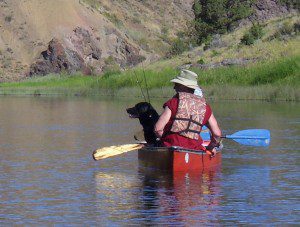
A wide-brimmed hat offers protection from the intense sunlight that reflects off water.
These hats don’t make the cut for me:
Baseball-style caps: On my 1980 end-to-end canoe voyage of the Mississippi River, I wore an Iowa State University trucker-style baseball cap. The wind on the river made that the best choice, and I had a lot more hair then for protection.
But these caps only shade your eyes and offer little to no protection from rain or sun on your face. Hunt or hike in the rain wearing one, and you’ll learn how uncomfortable it is to have water running down your neck.
Besides, on guys like me with a big, square head, they look dorky. My hiking partner, John Nerness of Los Gatos, Calif. has a small head. He can wear any baseball cap, and it will look great and like it was designed for him. If looks are important, make sure the baseball caps work for you.

I don’t like floppy brimmed hats.
That being said, I wear a trucker hat when I’m going to be in and out of a vehicle, or where it is bound to be windy. The baseball caps do protect that bald spot. If you are wearing a rain hood, they are fine for keeping the hood’s material from obstructing your vision.
And there are baseball-style hats that have an attached piece of fabric that shades the neck and ears. These can be a viable option.
Floppys: The short-brimmed, floppy hats like Gilligan wore are not much good IMHO. The brim is too short to shield your eyes from the sun’s glare, and the rain can drip down the low spots in the brim. They are better than a baseball cap, but not by much.
Many servicemembers wear boonie hats as part of their uniforms. God bless them.
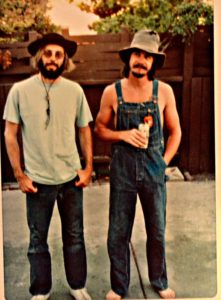
John Nerness, left, and I had just gotten back from several mountain backpacking trips in 1976. My dad’s Stetson was already showing its age.
That brings us to fedora-style brimmed hats.
According to the Village Hat Shop: “From the late 1890s to the 1950s, the fedora was THE hat to have for men. With an indented crown and characteristic “pinch” near the front on both sides, this hat style is pretty instantly recognizable. … Whether wide or short brim; made of wool felt, straw, or leather this classic hat truly stands the test of time.”
My first felt fedora was a hand-me-down from my dad. It was a Stetson he wore when dressing up. I wore Dad’s hat on several major backpacking trips until it virtually disintegrated.
That Stetson was on my head when I hiked the John Muir Trail. (Read my journal.) The constant rain in the Sierras, interspersed with brilliant sunlight at high elevations made me appreciate the protection.
Based on decades of experience, here is what I look for in an outdoor hat.
Wide enough brim to keep rain off your neck and sun off the face.
Put the hat on, and see where the drip line would hit you. The rain will drain off the hat, and I prefer that the brim directs the moisture to hit about the middle of my back. In heavy rain, I will be wearing a poncho or rain suit, and the water will be directed away.
Then check to see if the brim shades your eyes well. This becomes a big deal in the higher elevations of the mountains, or in the desert, where the sunlight is intense.
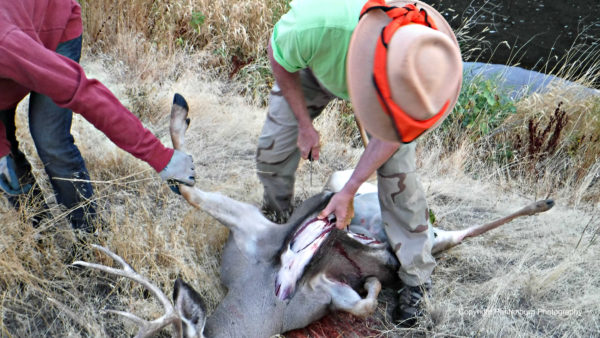
This felt fedora was originally blaze orange in 1991 and is my western big game hunting hat.
Chin strap: Think about adding a chin strap if there is the potential for high winds. Gale force wind is a big deal on the Mississippi River, where I sometimes canoe. The wind gusts upstream and blows any hat off your head if it is not secured.
That happened to me at Lake Powell, Arizona. I was on the deck of a cruise ship, when an unexpected gust blew my favorite Pendleton fedora off my head and into the lake.
Material to fit the situation: A black felt cowboy hat may not be the best choice in the blazing desert, nor do you want a mesh-crowned jungle hat in a snowstorm. And a well-ventilated straw is the traditional choice for hot weather farm work.
I like the mesh crown hats for really hot weather. But these are not the best for rain, and if the temperatures drops and the wind picks up, the hat can cool your head too much. I regularly wear a black or an off-white cowboy hat, depending on the weather conditions and what I feel like wearing. The lighter colored hat is warm, but cooler than the black one.
I tried out a Buffalo Wool hat a while back, and liked it so much, I gave it to a good friend and bought another. (At the time of publication, Buffalo Wool has no sponsorship relationship with Survival Common Sense. Buffalo Wool had no input in this post.) The buffalo wool seems to breathe better than conventional wool felt, and mine can be rolled up and stuck in a pack or suitcase. They’re not cheap, but quality survival gear is worth the investment.

This mesh crown hot weather hat is just right for areas with high temps and humidity.
Stiff brim: The brim determines the sun protection and where the rain will drip off. If the brim is floppy – think Jed Clampett – the water drains down the fold, wherever that might be.
Also – I have this theory that a wide-brimmed hat is warmer because it slows down the heat that escapes from the collar of your shirt. This creates a warm zone that your ears will appreciate. You can try this yourself – take along a baseball cap and swap them out. I think you’ll agree.
So those are my thoughts. Naturally, you may end up in entirely different situations, and your preferences probably differ. But a hat that protects your head should be in your survival clothing. Find the one you like.
Please click here to check out and subscribe to the SurvivalCommonSense.com YouTube channel – thanks!




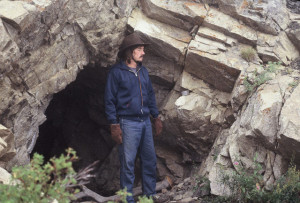
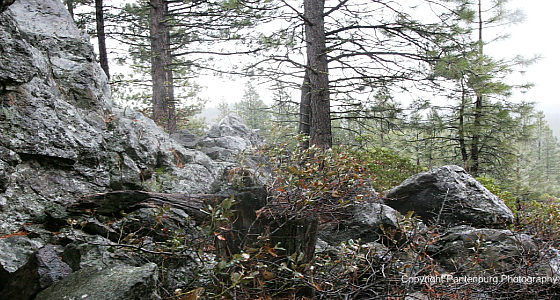
Robert Richards
Next fedora try fur felt.
Fur felt generally holds up better to a soaking than does wool felt.
Fur felt holds shape longer than wool felt, generally.